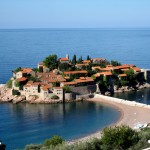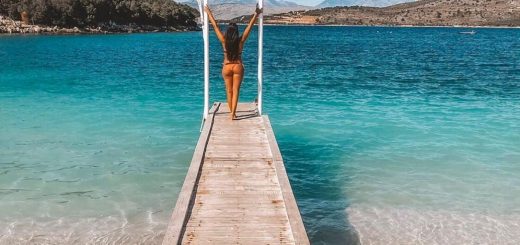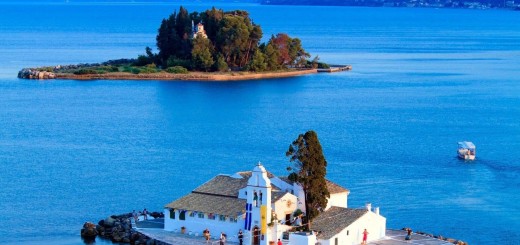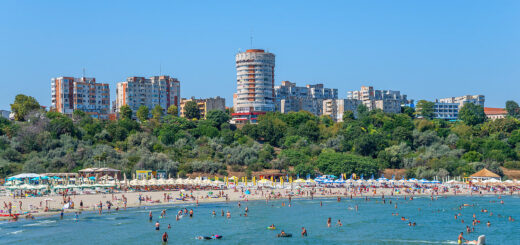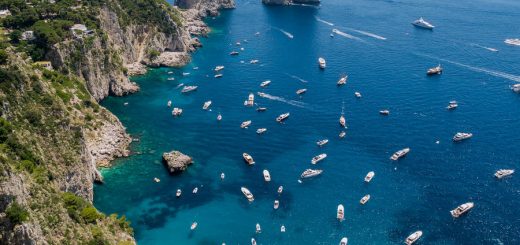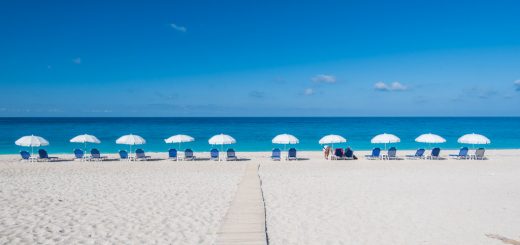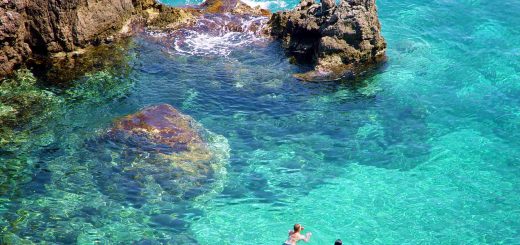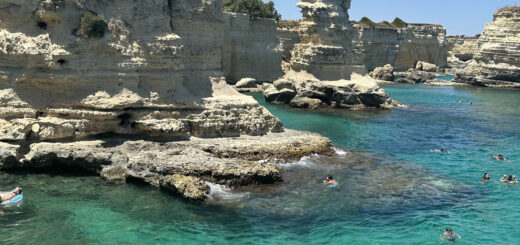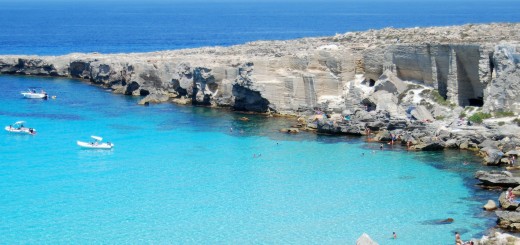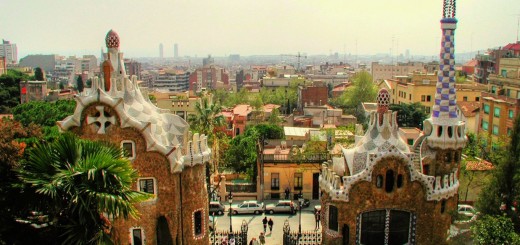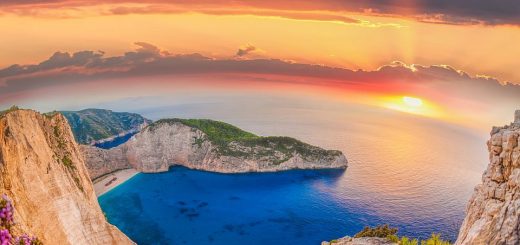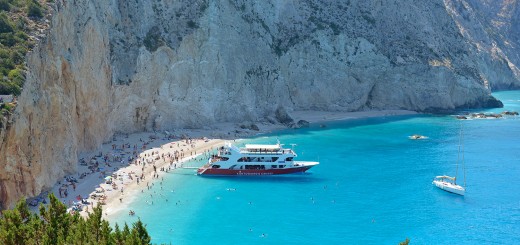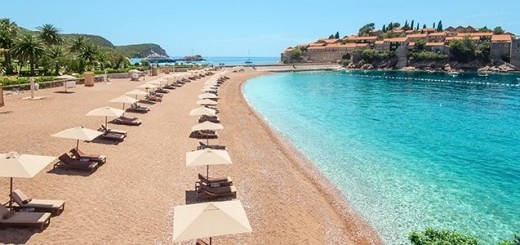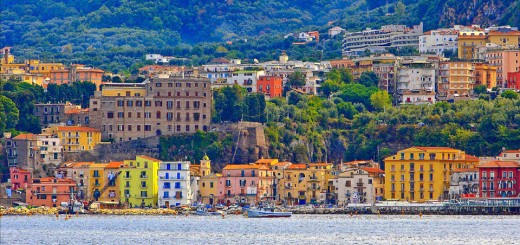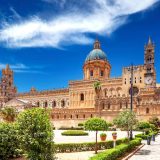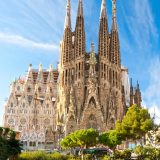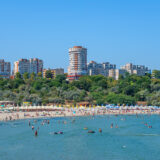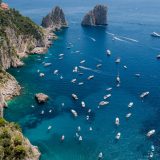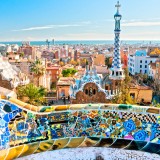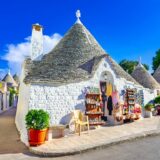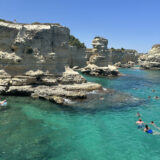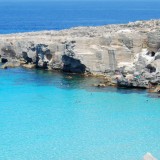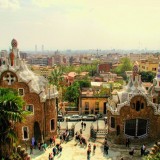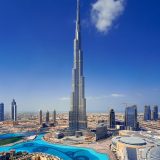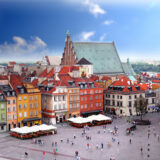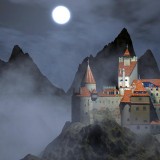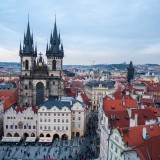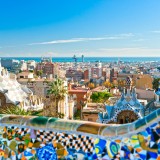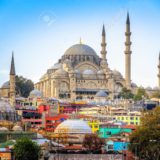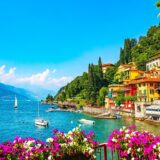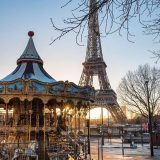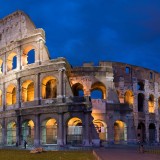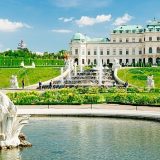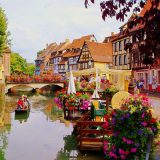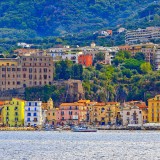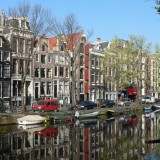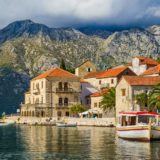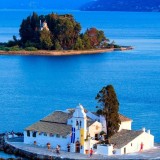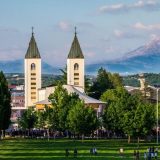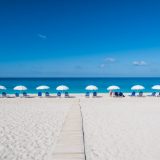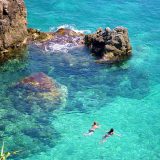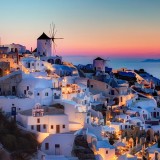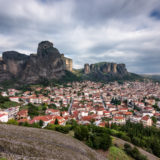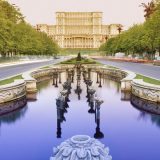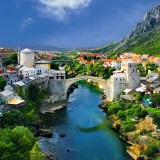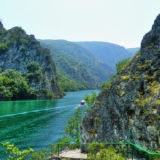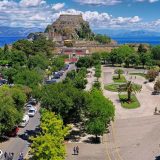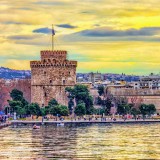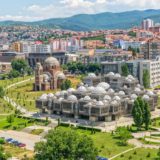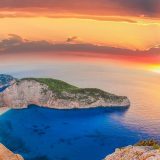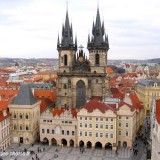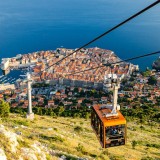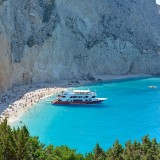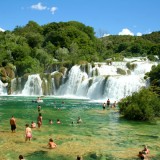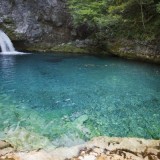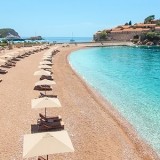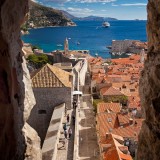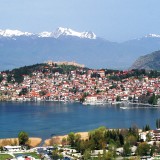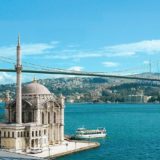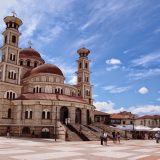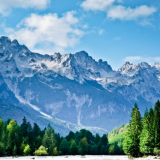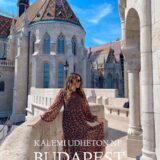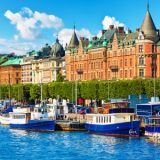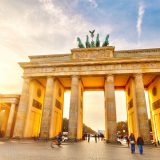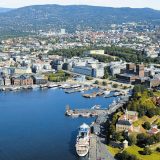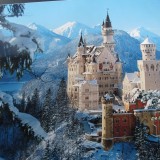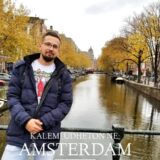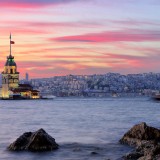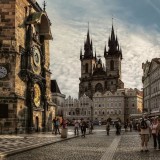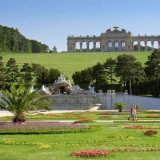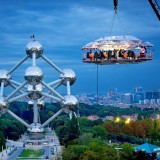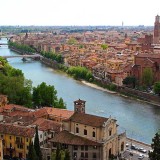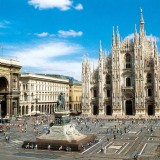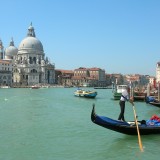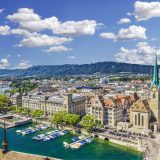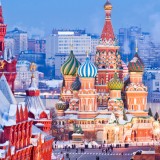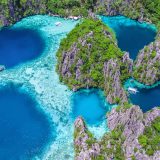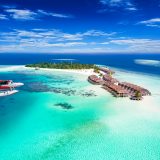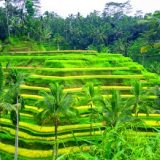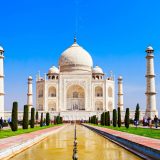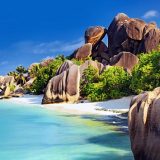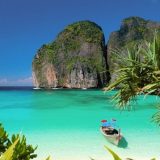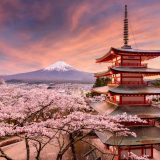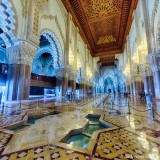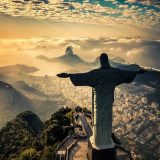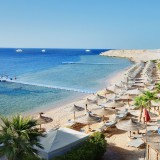- Visit Balkans
- Visit Balkans
- Visit Balkans
- Visit Balkans
- Visit Balkans
- Visit Balkans
- Visit Balkans
- Visit Balkans
- Visit Balkans
- Visit Balkans
- Visit Balkans
PART 1. ALBANIA’S UNESCO HERITAGE |
|
|---|---|
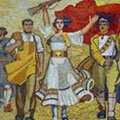   |
Day 1: Tirana Meet at airport and transfer to Tirana for a visit at the National Museum of History which is a great introduction to the history of the country and its people. Afterwards take a driven tour of the major sites of Tirana, including the colourful buildings for which the Albanian capital is now known. The dull grey communist architecture buildings have been transformed into modern art canvases through splashes of bright colours and abstract shapes. An ingenious way of uplifting the facades and the moods of the inhabitants. Overnight in Tirana. |
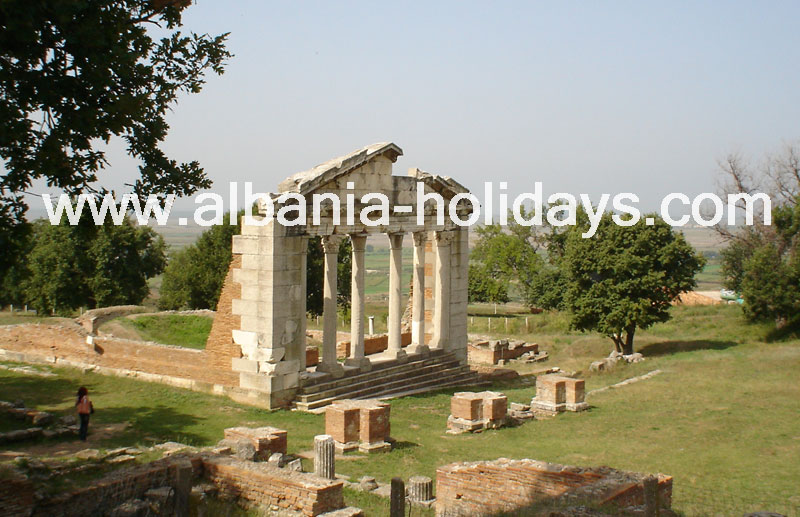   |
Day 2: Tirana – Apollonia – Vlora (3.5 Hours driving time) After breakfast we depart for the archaeological site of Apollonia one of the most important ancient centres in Roman times on the famous Via Egnatia. Due to its fame and importance it was known as Apollonia Prima built to honour Apollo. Caesar chose to send his nephew Augustus Octavian to study oratory in Apollonia which is testimony to the importance of this ancient city. Visit the city and an Orthodox monastery turned into an archaeological museum. After the visits continue on to Vlora where we overnight. |
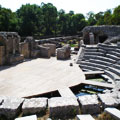   |
Day 3: Vlora – Butrint (UNESCO)- Saranda (4 Hours driving time) After breakfast we depart to Saranda through the spectacular Albanian Riviera with its traditional villages. At the Llogara National Park we stop at around 1100 metres where spectacular views of the Ionian Sea can be admired. Afterwards continue along the wonderful coast to the ancient city of Butrint another UNESCO World Heritage considered the best archaeological site in Albania and probably one of the most important in the Balkans. The city was first settled by Greek colonists and was continuously inhabited for centuries forming archaeological layers of passing civilizations, giving archaeologists the possibility to study continuity through time. It is situated on a beautiful peninsula among dense vegetation. The site has been occupied since at least the 8th century BC, although myths associated with its origins speak of the city’s foundation by Trojan exiles. After a thorough visit of the site return to Saranda for overnight. |
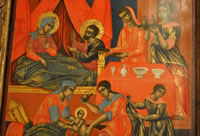   |
Day 4: Saranda – Mesopotam Monastery – Gjirokastra (UNESCO) (1.5 Hours driving time) In the morning we depart for Gjirokastra a museum town under the protection of UNESCO as a World Heritage Site with beautiful and very distinct architecture. On the way we stop at the Mesopotam Church where carvings of mythological beasts can be admired on the outer walls making this a distinct church where mythology and religion combine in a place of worship. Afterwards in Gjirokastra we visit the fortress part of which was turned into a political prison for dissidents of the communist regime and an Arms Museum. Visit to the Ethnographic Museum, which is also the house the Albanian dictator was born in, as well as a 300 year old house next to it, where the grandeur of Gjirokastra’s master builders can be observed. Overnight in a Gjirokastra House turned hotel, an interesting and unique experience. |
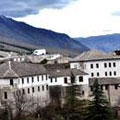   |
Day 5: Gjirokastra – Berat (UNESCO Town) (4 Hours driving time) After breakfast depart for Berat, one of the most visited and characteristic towns in Albania under the protection of UNESCO as a patronage of humanity for its architectural uniqueness. We visit the Castle and the Onufri Museum. Berat castle is of particular interest as people still live within its walls in their traditional houses, as have their ancestors for centuries. The castle used to have over 40 churches of which 7 still remain including St.Mary’s church turned into Onufri Museum. Onufri was a famous Albanian Icon master painter of the 16th century who painted many orthodox churches in Albania and Greece, using a special red colour. Berat is also known for its close ties with religious practice as two of the oldest bibles in the world have been found here. One dates back from the 6th century AD and the other from the 9th century AD and are internationally renowned for their theological importance. We have a homemade lunch in one of the houses in the castle. Just below the castle we visit the Leaden Mosque, the King’s Mosque, the Bachelor’s Mosque and the Alveti Tekke completing a tour of this town’s religious tolerance. Overnight in Berat in the old district of Mangalem in beautiful old houses turned hotels. |
PART 2. MACEDONIA’S RELIGIOUS RELICS |
|
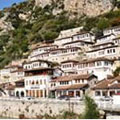   |
Day 6: Berat – Elbasan – Struga – Ohrid (4 Hours driving time) After breakfast depart for to the city of Ohrid. On the way we drive through rural villages with wonderful countryside landscapes. We stop at Elbasan for a visit at the castle. Afterwards proceed to Struga famous for its wall of water where the Black Drin River flows out of Lake Ohrid on its way to the Adriatic. In August, the famous international poetry festival is staged on the bridge over the Black Drin. After a short visit continue on to Ohrid where we take a familiarization tour of the town, proclaimed UNESCO World Heritage region for its cultural and natural legacy. Overnight in Ohrid. |
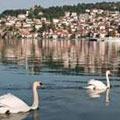   |
Day 7 Ohrid (UNESCO) After breakfast visit: Church “St. Sofia”, built between the 11th and 14th century, was the seat of the Archbishop. “St. Clement”, a classic Orthodox Byzantine church, dominating the Old Town, demonstrates the link between Byzantine and Italian Renaissance art. At “Plaoshnik”, in the 9 the century, St. Clement of Ohrid founded the first University of Europe and educated 3.500 students, St. John at Kaneo, stands alone on a small promontory which juts out into the Lake at the western end of the Old Town, and provides spectacular panoramic views of the Lake and surrounding mountains, Samuil fortress, etc. Other visits include: Saint Painteleimon Church, The Holy Virgin of Peribleptos Church, Icon Gallery, and old Bazaar. Overnight in Ohrid. |
   |
Day 8: Ohrid – Stobi – Skopje (4.5 Hours driving time) After the breakfast drive to Stobi one of the most important archaeological sites in Macedonia. Lying in a fertile valley just a few minutes off the central north-south highway that connects Macedonia with Greece, the ancient city of Stobi was a vital trade route in its days. Visit the excavation sites with beautiful remains such as a 2nd century amphitheatre, the Theodosia palace and early Christian ruins with extensive and ornate mosaic floors. Afterwards depart for Skopje where we take a guided tour of the main sites. Visit the old Turkish bazaar, Mahmut Pasha Hammam, the memorial house of Mother Teresa, stone bridge and the Macedonia Plaza. Overnight in Skopje. |
PART 3. TASTES OF KOSOVO, THE ‘NEW BORN” |
|
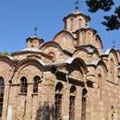   |
Day 9: Skopje –Gracanica Monastery –Ulpiana – Prishtina (3.5 Hours driving time) Morning we drive onwards to Prishtina (2 hrs). Before entering Prishtina stop at the wonderful Gadima Cave. Next visit the 1389 Kosovo Battlefield and Sultan Murat’s grave (both about 15 min away from Prishtina). Visit Gracanica Monastery which was constructed on the ruins of an older 13th century church of the Holy Virgin, which was built on the ruins of a 6th century early Christian basilica. Of the former monastic compound, only the church has survived. Visit Ulpiana an ancient Roman site also named Justiniana Secunda. Under the Roman Empire, Ulpiana flourished and it is mentioned as a glorious city “urb splendidissma”. Ulpiana suffered numerous attacks from barbarian tribes (Huns, Goths), it was destroyed in 479 by the Goths. A final blow came when an earthquake struck in 518 AD and destroyed what remained of Ulpiana. Next visit the 1389 Kosovo Battlefield and Sultan Murat’s grave (both about 15 min away from Prishtina)Overnight in Prishtina. |
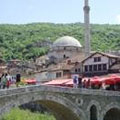   |
Day 10: Prishtina – Prizren – Rahoveci Wine Tour – Decan Monastery – Peja (3 Hours driving time) After breakfast we drive to visit Prizren, a true open air museum, one of the most beautiful towns of Kosovo. It is situated on the slopes of the Sharr Mountains and on the banks of the river Bistrica. The craftsmen of Prizren are well known for their beautiful gold and silver articles and other folk handcrafts. From all the cities of Kosovo, Prizren has best preserved the architectural style of the past. Take a short tour of the Rahoveci renowned wines; Stone Castle and Podrumi i Vjeter, where a traditional lunch with the nice local wines concludes the first half of the day. Afterwards head towards Peja through the magnificent the Rugova Gorge to the Decani Monastery near it. This monastery complex is a wonderful example of the Orthodox religious architecture and art part of UNESCO World Heritage Site and a must for anyone visiting Kosovo. Overnight in Peja. |
PART 4. MONTENEGRO, A WILD NATURAL BEAUTY |
|
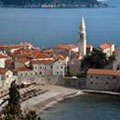   |
Day 11: Peja – Kolashin – Cetinje – Budva (4.5 Hours driving time) After breakfast a long drive through magnificent natural beauty of the North West Kosovo and Montenegro takes us to Kolašin which is Montenegro’s most famous ski resort, and its capital Podgorica. We will take a driven tour of the capital, Podgorica, and continue on another panoramic drive Cetinje a town of immense historical heritage, founded in the 15th century. It became the centre of Montenegrin life and both a cradle of Montenegrin and an Eastern Orthodox religious centre. Budva overnight. |
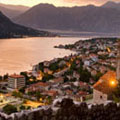   |
Day 12: Budva – Kotor (UNESCO) – Budva (4-5 Hours driving time) After breakfast drive to visit The Old City of Kotor a well preserved urbanization typical of the Middle Ages, built between the 12th and 14th century. Medieval architecture and numerous monuments of cultural heritage have made Kotor an UNESCO listed “World Natural and Historical Heritage Site”. Cetinje is a town of immense historical heritage, founded in the 15th century. It became the centre of Montenegrin life and both a cradle of Montenegrin and an Eastern Orthodox religious center. It is because of its heritage as a long term Montenegrin capital that it is today the honorary capital of Montenegro. |
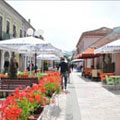   |
Day 13: Budva- Shkodra- Tirana (4 Hours driving time) After breakfast drive to Shkodra. On the way stop for a photo at Sveti Stefan renowned for its celebrity residents from the music and movie industry. Afterwards proceed to Shkodra centre of Roman Catholicism in Albania and a town with long historic roots, and the only mentioned capital of the Illyrian Kingdom. Visit the pedestrian area with Italian influences and the Castle thought to exist from Illyrian times. Lunch is recommended to be had in a village where organic tourism is promoted. After lunch return to Tirana to rest. Overnight in Tirana. |
| Day 14 Tirana-Airport After breakfast transfer to Airport. |
|
Price:
1150 Euro per person sharing a double or twin room for minimum 6 participants
1290 Euro per person sharing a double or twin room for minimum 4 participants
2130 Euro per person sharing a double or twin room for minimum 2 participants
Supplement single occupancy of a double room will be 250 Euro.
Includes:
- 13 nights’ Accommodation in good 3* standard hotels and characteristic houses with breakfast
- Transportation with luxury a/c vehicle.
- 2 lunches one in Berat Albania and one at Rahovec in Kosovo.
- English speaking guide/driver (separate driver and guide for 6 participants).
- English speaking local guides in Macedonia and Montenegro as needed
- All taxes
Excludes
- Flight Tickets
- all meals apart from 2 lunches mentioned
- Entrance fees according to the program (approx 50 Euro pp)
- Gratuities/Tip to Driver/Guide
For reservations contact us on the emails:








